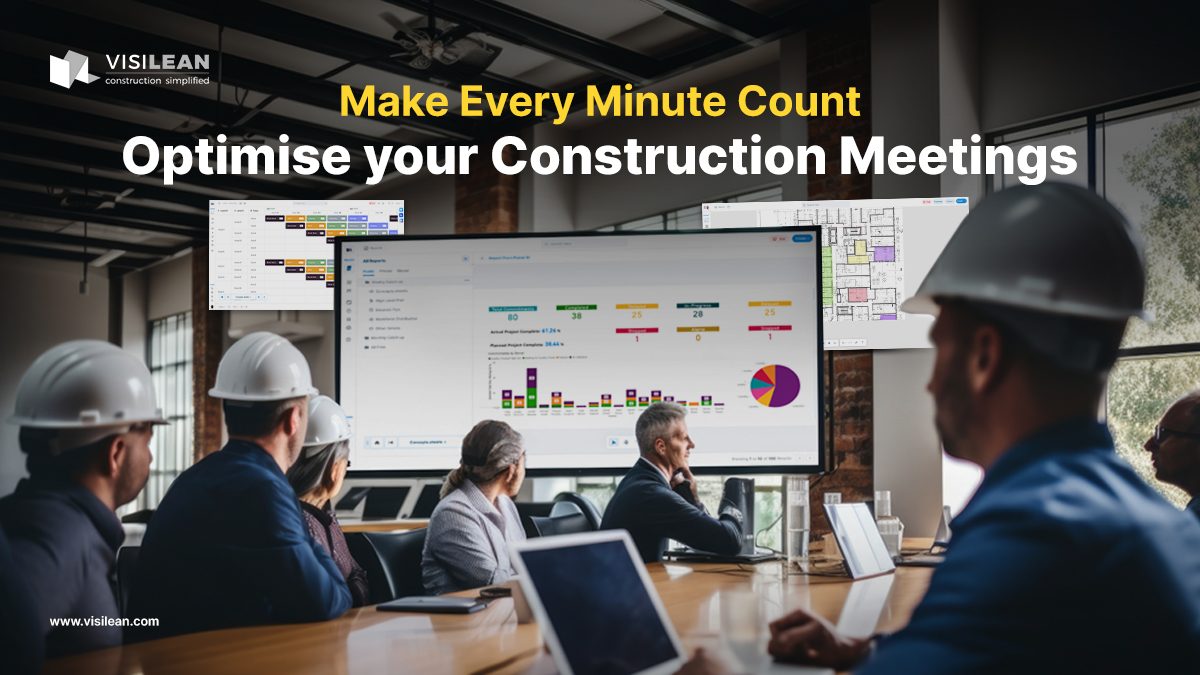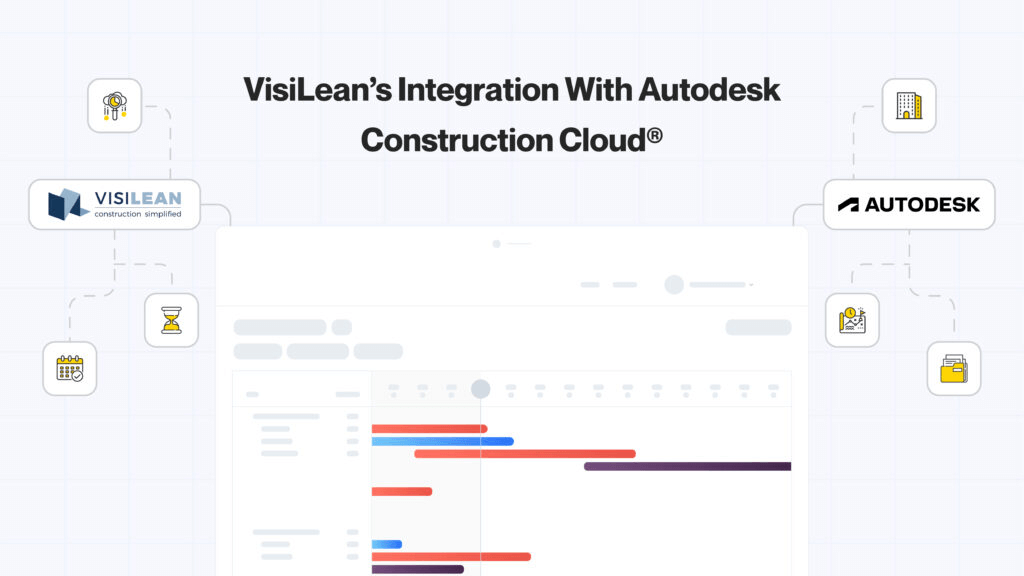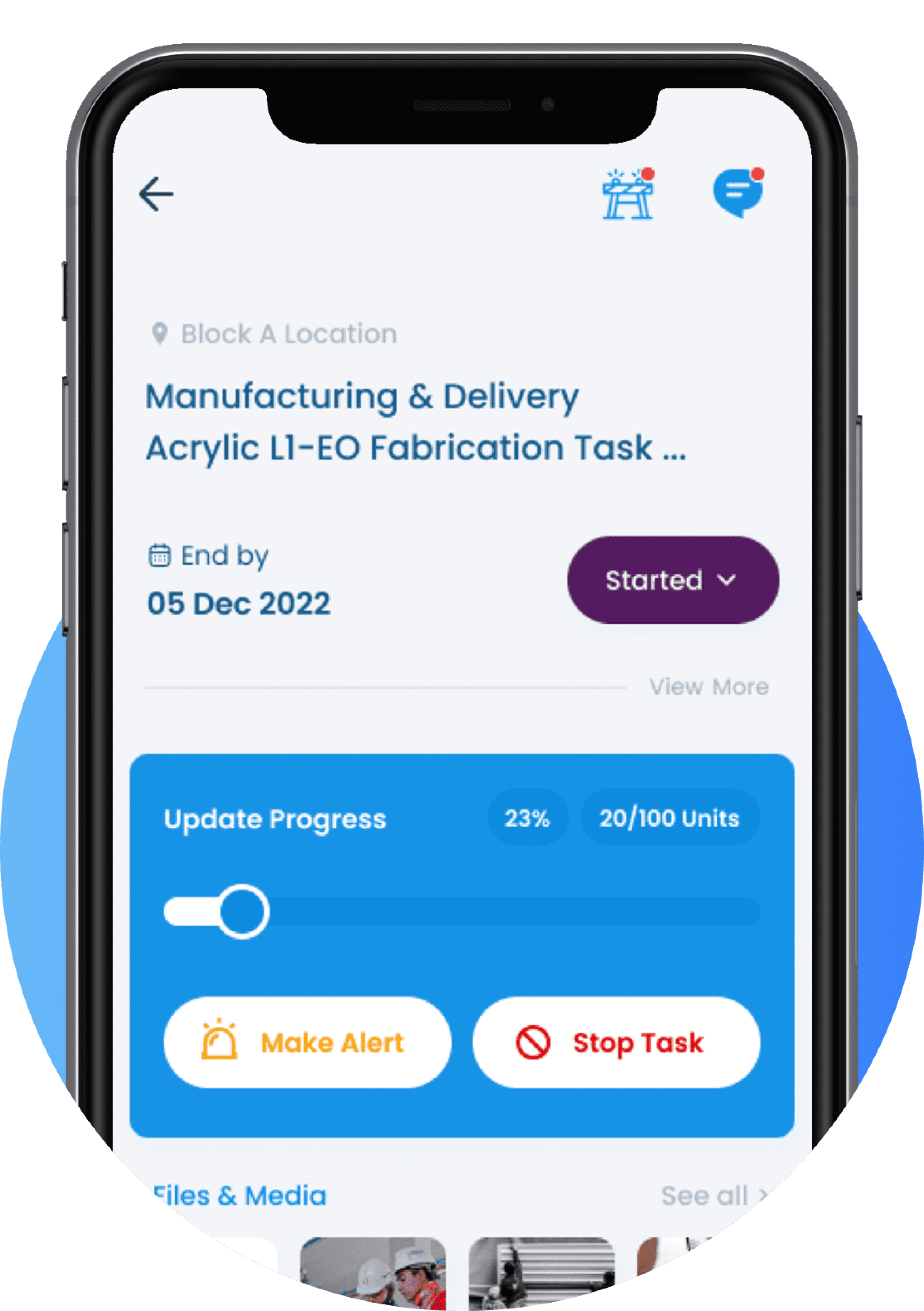There’s nothing more astounding than driving past a construction site and seeing hundreds of workers, huge cranes, and other machinery all over the field. The process, to a casual onlooker, is still pretty much the same as it was 40 or 50 years ago. And the latter part of the sentence is our main concern. This behemoth of an industry that accounts for more than 11 trillion dollars’ worth of construction work has been one of the slowest to adapt to changes and probably the last one to opt-in for digitalisation. This brings us to the million-dollar question that has been resonating in the AEC industry when it comes to changes – “Why should we change now?” We take a deep dive to figure out why the industry is averse to changes and how a construction project management solution like VisiLean can help change this perspective.
If it isn’t broken, why fix it?
We have been doing things this way for ages and it is working. Why changing things and disrupting the flow now, is one of the common refrains in the AEC industry. Change, we know can be confusing. It brings about a fear of the unknown and this is the main worry that the AEC industry is battling.
Over the last 50 decades, the construction industry has made use of technology to aid design and planning. There has been considerable progress in how a project is planned and designed, but there has been little progress in how they are executed – and this is where 90% of the money is spent. The following statistic is an eye-opener.
35% of construction professionals’ time is spent (over 14 hours per week) on non-productive activities including looking for project information, conflict resolution and dealing with mistakes and rework. [Autodesk + FMI]
Paper trails, tracking down people, lack of efficient communication and chances for errors make the project extend its time frame leading to heavy losses, hence a fall in productivity. What can be done to negate this fall?
Digitalisation is a must-have, not a good-to-have anymore.
Way back in 2017, experts at McKinsey Global came out with a study that said the construction industry had seen a meagre productivity growth of 1% annually for the past two decades. The Covid-19 pandemic, the cumulative impact of the supply chain, funding woes, inflation and a global crisis has snowballed and left the industry in a state of stalled project sites with no clear prospects of growth. The industry is battling inflation and an imminent shortage of skilled workforce to deliver projects – this affects not just the efficiency of project delivery but also puts the entire project at the risk of cost-cuts, poor execution, inadequate quality, and a lack of safe practices.
To get the right people, materials, and equipment to the right place at the right time, what is the most effective method? This made the sector opt for digitalisation, albeit grudgingly. Our solution specialist Paramjit Lota has in this blog discussed at length why digitalisation is the future of construction.
There is no doubt that paper trails are time-consuming. They can get lost and delay a timely action. With digitalisation, the industry can do away with the cumbersome paperwork and consolidate it all into a single platform that is accessible to all stakeholders. This will speed up the information-sharing process, hence doing away with delays and reworks that are the bane of the industry. An ideal digital project management solution should deliver a seamless real-time experience across design management, scheduling, material management, crew tracking, quality control, contract management, performance management and document management.
The key is to take the right steps, today.
That said, digitalisation still has a very long way to go. With plenty of options in the market, it can be overwhelming to zero in on the best product for your requirements. The magic of enabling this lies closely with making it work for the people; all the way from buy-in from the top-management to the workers on-site. While the enterprise must be made aware of the benefits, strategy, and defining the KPIs, the team on the ground requires careful training and handholding to support them through the change management process.
This is where an end-to-end construction management solution like VisiLean, with its expert team of implementation consultants, comes into the picture. But before we get there, here are some statistics to check out for.
$1.63 trillion could be saved annually from infrastructure productivity changes. [McKinsey Global Institute]
68% of trades point to poor schedule management as the key contributor to decreased labour productivity. [Autodesk & Dodge Data & Analytics]
Where does VisiLean come in?
VisiLean is committed to digital transformation in the construction industry. With VisiLean, we address the heart of construction – production management. The dedicated modules allow you to digitalise your production planning, monitoring, and tracking, and the right set of tools to provide production control, VisiLean helps you transition seamlessly towards Lean digitalisation.
Allow us to give you a snapshot of a success story with one of our clients.
Our client is a project management and consultancy business with expensive experience in working on mission-critical technically complex projects for data centre owners. The project we associated with was the replacement of ten Hitec Power Protection UPS units at a major data centre owned by a global REIT in San Francisco. It was a challenging project because the data centre was housed on the upper floors of a space-constrained building. The units had to be replaced sequentially, one at a time with no downtime for customer business operations. Each replacement cycle was originally anticipated to be eleven weeks in duration, with the whole project taking around a year.
- Installation cycles reduced from 11 to 4.5 Weeks: VisiLean provided detailed evidence of past performance for review at weekly planning meetings
- PPC increased from 30% to 90%: Everyone started using VisiLean for 5 to 10 minutes a day and became personally committed to achieving their colour-coded activities.
- Accuracy of Planning: The accuracy of planning horizons changed from being measured in weeks to being measured in days.
By extrapolating the cost that was avoided by switching to a VisiLean-based planning and scheduling environment, the project was able to avoid an additional direct labour cost of between $800K-$1.6M.
Isn’t that extraordinary? And that is not the whole story. On one of our flagship Data Centre projects in Dublin, Ireland, our client, Mace has recorded and published the following benefits in a case study.
- 60% reduction in defects,
- 43% improvement in program efficiency,
- 45% reduction in labour spend.
And here’s some data from a recent survey about what our clients had to say regarding VisiLean.
- 84% of VisiLean Customers have managed to successfully replace multiple spreadsheets as part of their planning and review process with VisiLean.
- 74% of VisiLean Customers have reported better communication between teams with VisiLean.
- More than 78% of Planners have reported that they achieved better collaboration in their lookahead planning process by reducing rework.
- More than 70 % of Project Managers have reported that they can save more than 4 hours per week with better visualisation of workflow in their projects.
- More than 86% of Construction Managers have reported improved ownership of project information amongst their teams for informed decision-making.
Have we managed to sway your mind yet?







